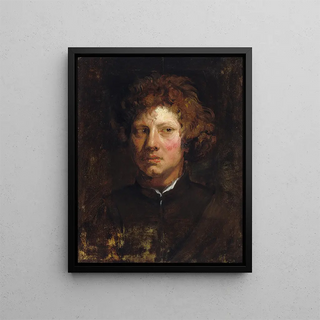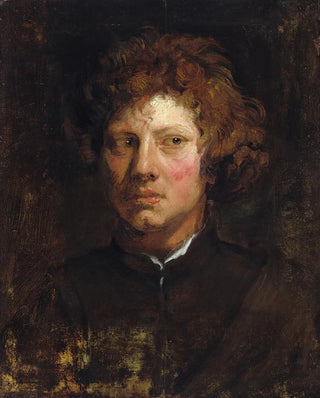Art print | Head of a Young Man - Antoine van Dyck Source: Reproduction | Tête d'un jeune homme - Antoine van Dyck


View from behind

Frame (optional)
Antoine van Dyck's "Head of a Young Man" is a masterpiece that transcends a simple portrait to capture the very essence of youth and fleeting beauty. Painted in the 17th century, this iconic piece showcases the artist's virtuosity, who manages to breathe palpable life into his subjects. In this work, the intense gaze of the young man seems to invite the viewer to contemplate not only his appearance but also the soul behind this delicate face. The soft light caressing the features creates a play of shadows and highlights, enhancing the sense of depth and emotion. Every detail, from the fine down on the skin to the reflections in the eyes, is meticulously rendered, demonstrating exceptional technical mastery.
Style and uniqueness of the work
van Dyck's style is distinguished by its ability to combine realism and idealization. In "Head of a Young Man," the artist succeeds in capturing not only the physical appearance but also the soul of his model. The composition is both simple and powerful, highlighting the young man's face against a neutral background that emphasizes his expression. The colors, delicate and harmonious, are carefully chosen to evoke an atmosphere of serenity and contemplation. The subtle use of shadows gives this portrait an almost sculptural dimension. This stylistic choice, blending Flemish and Italian influences, reflects the evolution of art during this period, where the depiction of the human figure takes on a new scope, combining emotion and technique.
The artist and his influence
Antoine van Dyck, a pupil of Rubens, forged a unique identity that established him as one of the masters of portraiture in the 17th century. His career took him across Europe, where he exerted a significant influence on many artists. His ability to capture the personality of his subjects and portray them with such intensity redefined portrait standards. Van Dyck was also the portraitist of kings and nobles, which further enhanced his reputation. His style, characterized by refined elegance and a

Matte finish

View from behind

Frame (optional)
Antoine van Dyck's "Head of a Young Man" is a masterpiece that transcends a simple portrait to capture the very essence of youth and fleeting beauty. Painted in the 17th century, this iconic piece showcases the artist's virtuosity, who manages to breathe palpable life into his subjects. In this work, the intense gaze of the young man seems to invite the viewer to contemplate not only his appearance but also the soul behind this delicate face. The soft light caressing the features creates a play of shadows and highlights, enhancing the sense of depth and emotion. Every detail, from the fine down on the skin to the reflections in the eyes, is meticulously rendered, demonstrating exceptional technical mastery.
Style and uniqueness of the work
van Dyck's style is distinguished by its ability to combine realism and idealization. In "Head of a Young Man," the artist succeeds in capturing not only the physical appearance but also the soul of his model. The composition is both simple and powerful, highlighting the young man's face against a neutral background that emphasizes his expression. The colors, delicate and harmonious, are carefully chosen to evoke an atmosphere of serenity and contemplation. The subtle use of shadows gives this portrait an almost sculptural dimension. This stylistic choice, blending Flemish and Italian influences, reflects the evolution of art during this period, where the depiction of the human figure takes on a new scope, combining emotion and technique.
The artist and his influence
Antoine van Dyck, a pupil of Rubens, forged a unique identity that established him as one of the masters of portraiture in the 17th century. His career took him across Europe, where he exerted a significant influence on many artists. His ability to capture the personality of his subjects and portray them with such intensity redefined portrait standards. Van Dyck was also the portraitist of kings and nobles, which further enhanced his reputation. His style, characterized by refined elegance and a






